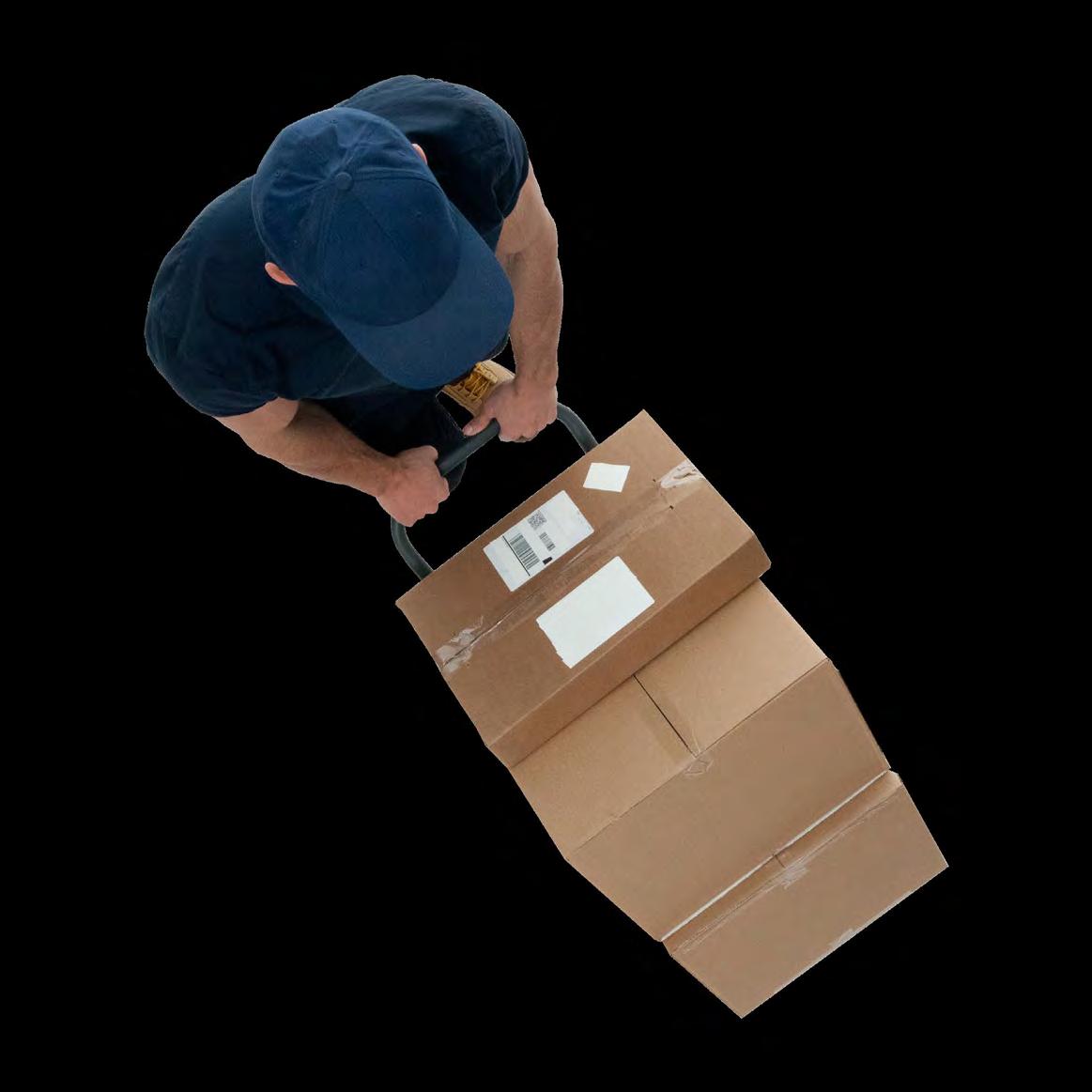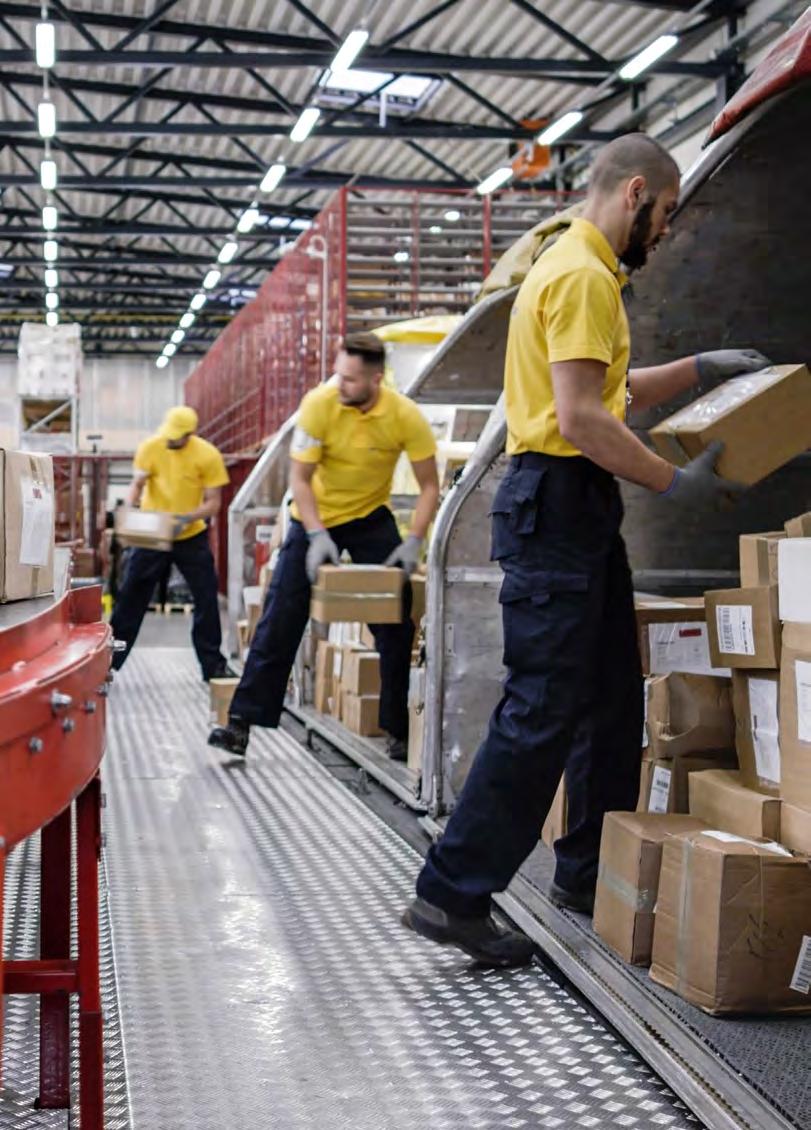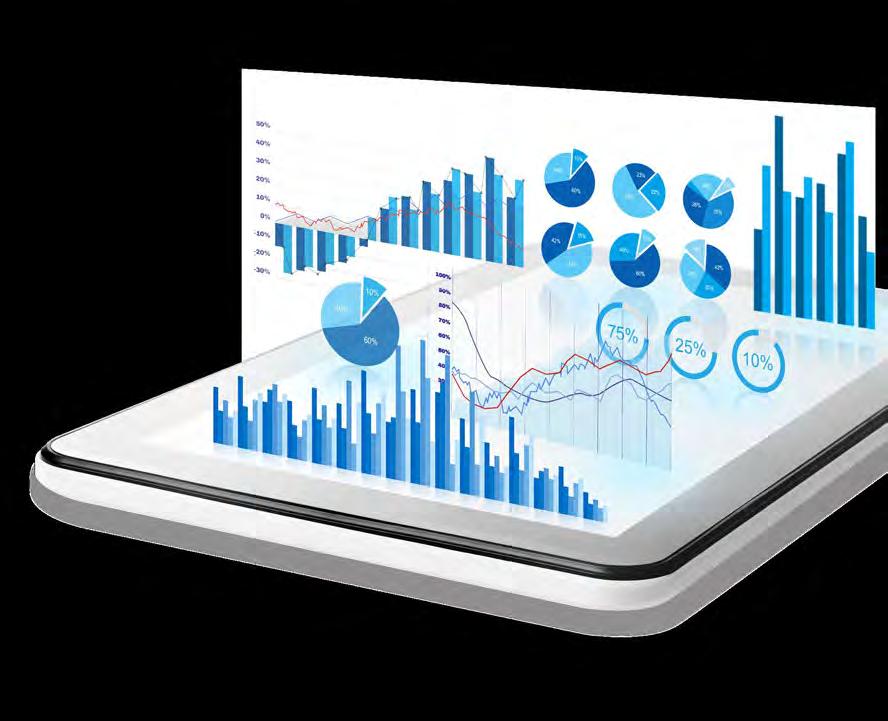

Aptean Distribution ERP A How-To Guide for the Drop-Shipping Revolution
We're amid the rise of the digital economy. And consumer buying habits are changing. They've been changing for years now. The COVID-19 pandemic has only expedited the speed at which importers and distributors adjust to these new habits.
More now than ever, consumers want the product they want instantaneously. And if you can't get them the product they want by the time they want it, they'll just go someplace else.
A recent McKinsey report found that more than 75% of customers tried new brands and places to shop during the pandemic—and buyers said that product availability was the primary reason why.
You need the right tools to position yourself for success.
An all-in-one consumer goods ERP can help you stay on track and on schedule—ensuring your products are available when your consumers want them. It’s a tool that supports seamless communication between business partners, warehouse efficiencies, product tracking, and real-time access to inventory levels.
Without this tool, the challenges of successfully drop-shipping product to consumers are ever-present.
It’s important to recognize some of the challenges associated with drop-shipping product. Particularly as it relates to:
› Changing consumer buying habits
› Real-time information exchange
› Managing shipments efficiently
› Streamlining processes
Let’s break down these drop-shipping challenges a bit further.
2 | eBook | A How-To Guide for the Drop-Shipping Revolution
Changing consumer buying habits
The prominent contributor here is the rise of the digital economy. Online shopping has simplified the buyer's journey—it's easy to click a button and have product delivered nearly immediately. It means that price is no longer the only competitive advantage for companies—offering a short lead time is.
COVID has amplified the online shopping marketplace. There's an entirely new demographic of people buying online—in addition to all those folks who were regular ecommerce participants.

There remains a big unknown in terms of consumer buying habits: what will buying preferences look like post-COVID? That's the big question, isn't it? Will we once again be out and about visiting retail brick-and-mortar stores like before? Or will consumers have become more comfortable with buying online and having the product delivered to their doors?
The latter seems most likely. Even though COVID further altered how consumers shop and buy, the truth is the landscape has been changing for years. And for importers and distributors of consumer goods, if you're not in the ecommerce market now, you should begin to shift in that direction.
Because that's the way people are shopping. And here's the harsh reality: if you're not willing to change to accommodate these new shopping habits, the world is going to move on without you.
There are purpose-built software solutions you can utilize to help you effectively manage this ecommerce transition. Tools that enable you to easily:
› Fulfill an order
› Ensure the right inventory and labor to pick, pull, pack and ship
› Shift from traditional full pallet and truck shipping
› Re-engineer your warehouse processes to accommodate the new fulfillment model
Change is always hard. And scary. But the right software can make the transition to ecommerce sales and distribution less so. And in the long term, it'll be worth it. Because not only are you able to do all the things we just listed here, but you're able to do so much more.
eBook | A How-To Guide for the Drop-Shipping Revolution | 3
Real-time information exchange
One of the single greatest threats to a successful consumer goods business is manual data entry. Your data is outdated the second it's written down. It changes that frequently.
Manually keying your orders, tracking information, updated inventory levels or updated ecommerce product information into a single system or between multiple systems is a seriously labor-intensive, timeconsuming process.

If you're operating this way, a human must be involved at every step of the process: input the data, receive it, and then place it in some designated place. It's costly, prone to mistakes and presents another challenge: scaling up.
If you were to double your volume, for example, and you were operating with manual processes, you must increase your staff to accommodate those orders. It's inefficient and costly.
You also run the serious risk of data inaccuracy. It could be a simple case of mis-keying information. Regardless of why—it's still inaccurate. And it's eventually going to cause downstream issues.
Because the data is entered manually and dependent on humans, there are going to be inevitable delays. This is particularly true in terms of advancing orders, getting information into the right systems and getting product out the door. And when one of the largest competitive advantages is speed, every minute counts.
4 | eBook | A How-To Guide for the Drop-Shipping Revolution
A solution that updates data in real-time and can easily communicate those changes eliminates all the challenges associated with manual data entry.
With an industry-specific ERP, you're stepping away from an antiquated multi-system environment and stepping into a solution that scales and grows as your business does. All your information is in one place, works across departments, streamlines processes and stores all your data for reporting and analysis.
You don't have to worry about integration issues because all the data is already there.
A consumer goods ERP is the solution that can connect you to a multitude of ecommerce platforms. That can enable you to manage DTC fulfillment easily. That can provide you with information on availability.
It has built-in EDI and WMS capabilities, has API connectivity, offers validations (on pricing and addresses, for example), can provide acknowledgments and tracking information, and the best part: it gives you all of this information in real-time.

eBook | A How-To Guide for the Drop-Shipping Revolution | 5
With an industry-specific ERP, you're stepping away from an antiquated multi-system environment and stepping into a solution that scales and grows as your business does.
Managing shipments efficiently
So much of this comes down to the warehouse. To smooth, quick processes. To automation. To real-time visibility.
If you’re looking to get shipments out the door efficiently, several things must happen:

1. Reduce the time it takes to pull product and pack each order.
You do this by reducing touchpoints. Your ERP can help you with this.
Let's say, as an example, you have 20 orders. And you walk up and down the aisles, picking the product for each of those 20 orders individually. For each of those orders, you're pulling product, placing it at a pack station, where each order is then packed and shipped one by one. That's the traditional model—how things have worked before.
But we can simplify this process. Rather than walk the aisle 20 times to pick those orders, you bulk pull—you walk the aisles once and pull all the product you need to fulfill all 20 orders. This, quite literally, means time back in your day—time to re-dedicate to more orders or more pressing tasks.
6 | eBook | A How-To Guide for the Drop-Shipping Revolution
Let's continue with the previous example. Each of those 20 orders can be picked, packed and out the door if you don't have to spend so much time walking up and down the aisles.
Maybe you have a cart with you, so not only are you picking the product across those 20 orders, but you're keeping them organized. And maybe simultaneously picking and packing so that as you're walking the aisles and picking the product, you're placing it in a shippable carton. That way, in the end, there's no repacking of product that has to take place.
It's also worth noting that the traditional methods of picking and pulling can't scale as volume grows. You're stuck going up and down those aisles again and again and again. A bulk pull and pack process, however, does scale and does allow you to adjust for increased drop-ship volume.
A consumer goods ERP supports this kind of workflow, and if you don't have this shipping flow in place, it's a solution that can help you create one.

3. Avoid using multiple systems to produce labels and paperwork.
Are you able to produce parcel labels at the point you’d like to have them? If no, it’s time to reevaluate your current solution. You should have the option to print the label at a pack station or have it in the aisle when you’re picking it and placing it in the carton. It’s small adjustments like these that make the difference. That’s time back in your day, money back in your pocket. And you can create these processes, these new efficiencies and communicate them widely within your ERP.
eBook | A How-To Guide for the Drop-Shipping Revolution | 7
2. Bulk pull all the product you need instead of walking the same aisles over and over.
4. Have product properly slotted.
Your ERP system should be flexible in setting up your warehouses so that you can define your zones, areas and bin locations as it best suits your business. You should also have the flexibility to adjust the rules based on your operations.
You must have the ability to apply settings within each of those zones related to inventory management, bulk picking/staging, put-away, receiving, replenishment and picking. You should be able to configure which warehouse workers should be active in each zone within your warehouse and which operations they're allowed to perform.
5. Enable your operators with hand-held devices.
By providing your operators with hand-held devices, you’re streamlining the data entry process. It’s real-time inventory tracking and accuracy and leaves no time for picking errors. All the information your operators need is with them as they move throughout the warehouse.

6. Automate data entry.
No more onerous, frustrating hours spent manually keying in data. No more unintentional human error. No more outdated data. No more rearview mirror decisions.
Everything is up to date. Everything is accurate. This is the reality for you and your business with an industry-specific ERP. This is how you master being a drop-ship vendor.
8 | eBook | A How-To Guide for the Drop-Shipping Revolution
Streamlining processes
So much of mastering drop-shipping comes down to streamlining processes. If you were to break down each of these categories to its bare bones, it'd be about efficient, streamlined processes.
Here we want to highlight a couple more things that an industryspecific ERP can do for you in terms of mastering drop-shipping.
› Credit card automation - You also want to quickly and efficiently process credit card transactions—either during the order or afterward. The process by which your customers pay invoices should be as easy as possible. You want to get paid. Make it easy for your customer to pay you.

› Product information management - When you're updating your ecommerce website, you want to know how and where to find all that production information—the product attributes, the availability, the price changes, etc. With Aptean Distribution ERP, you can store all this data in a central location to be communicated and shared electronically with those who need it.
› Sales tax - As a consumer goods distributor in an ecommerce world, you're likely going to have sales taxes to worry about. Depending on the number of states in which you operate, there may be multiple rules and rates with which you must comply. Not to mention, these rules and rates change all the time. You want to streamline this as much as possible with an all-in-one ERP solution. Rather than using multiple systems to calculate taxes and regulations, using a single system where all your data lives makes maintaining and regulating this information that much easier.
eBook | A How-To Guide for the Drop-Shipping Revolution | 9
ConclusionAptean ERP software helps manage your business' data, employees and workflow—making your operations more efficient and helping you grow your organization. We want to support your success—and ensure it for the long haul.

And really, it's all about getting your goods out efficiently and on time. Disparate systems, systems that aren't integrated, that don't seamlessly exchange data, and require manual entry and work, aren't going to cut it anymore. It's the harsh reality of consumer shopping habits. They want more, and they want it now.
Because of all of this, you need a solution that's going to work with you. One that's going to enable your business to grow. To become more efficient. To succeed and master the drop-shipping challenges. Aptean can help.
Ready for what’s next? Reach out, now.
10 | eBook | A How-To Guide for the Drop-Shipping Revolution
Are You Ready to Learn More?
Contact us at info@aptean.com or visit www.aptean.com.

Aptean provides very specific industries with very specific ERP, supply chain management, and customer experience solutions. In today’s fast-paced, highly competitive economy, organizations don’t have time to waste forcing homegrown software, spreadsheets, and one-size-fits-all solutions to do things they were never designed to do. Aptean is on a mission to end those workarounds – with industry-specific solutions instead of generic software, expert support instead of making you go it alone, and a steady influx of new ideas instead of the status quo.
For more information, visit www.aptean.com.
Copyright @ Aptean 2021. All rights reserved.











